Toys by Design: Circus Posterus
Design Bureau‘s December issue has been out for a couple of weeks. Have you picked up a copy? It’s got a cover story on young architects, interviews with design experts, photos of stuff you want to own and houses you’d like to live in, a 2011 gift guide and…my sixth Toys by Design column, this time spotlighting Kathie Olivas and Brandt Peters. In these times where many talented creatives find themselves unemployed, the notion of a collective feels more relevant than ever. Kathie and Brandt’s Circus Posterus is doing it right. Read the full interview, peep the pleasing photos (all © Brandt Peters), and get inspired!
JB: Kathie comes from the South West and Brandt hails from the West Coast, and you both grew up with a mix of antiques and pop culture. How did your formative experiences influence your current design sensibilities?
Brandt Peters/Kathie Olivas: As kids, being surrounded by our parents’ collections of antiques and vintage toys not only completely molded and directed all of our current design senses, but it lead to our interest in running a toy and high-end collectibles company. Maybe we’re eternally trying to reach back to our childhood, or maybe it’s because post-war design has charm for us. It was clever; it didn’t want to reveal all of its cards as much of today’s design does. Maybe our vintage design style is in direct retaliation and opposition to most current design trends that aren’t any deeper than the shiny surfaces they project…
JB: I like to give special attention to past and present goths on this blog. You two met at a goth club…in Florida?
BP: We did. It was eighties night at The Castle, a famous goth club in Tampa. I had my Specials shirt on, drinking cranberry vodkas, Joy Division was playing…it was perfect. That night, I met my best friend!
JB: Ian Curtis really did know how to craft a love song… So what’s it like to live and work together as a husband/wife team?
BP: It wasn’t the easiest thing for me as a budding artist in the beginning of our relationship. We were navigating waters that not many people know about. No matter how much I think I have everything together, things come up. There can be jealousies, like why did you get into that gallery or why did that toy company contact you and not me? Learning to work closely with someone, realizing that others have their own unique ways that are different than yours and yet right for them, and developing boundaries is important. Another thing is that we both have awesome and fucked up senses of humor. We’re always smiling, laughing and trying to get each other to laugh at ourselves. This is probably the coolest part of the whole thing to me: we are truly friends.
It’s the art of relationships: whether friend, colleague or lover (or all three at the same time). Kathie and I just get to explore that area deeper (and continue to) than most. It’s certainly not for the faint hearted, but then nothing is that you commit yourself to. And, yes, we still annoy each other, get under each other’s skin and get ‘into it,” like all other couples. Now insert Kathie making fun of me and saying something that levels everything I just said… (laughs).
KO: The relationship definitely balances itself out. I’m an extreme Type A, and I’m very lucky in that Brandt makes me relax and recharge while I try to always encourage him to push himself more. We are each other’s biggest cheerleaders and biggest critics, but at the end of the of the day we know that type of trust and friendship is priceless.
JB: What are your backgrounds in terms of design training and education?
KO: I graduated from the University of South Florida. I took every possible studio class I could at the time, but the best “training” I received actually came from working at a local theme park doing caricatures in order to pay my way through school. The best way to learn shape breakdowns and draw really fast is to do hundreds of drawings every day.
BP: I’m from a family of creatives, artists, designers and ceramicists. I taught myself everything I know. I started out as an inker for a local comic book company while in high school. That lead to being a penciler, designer and budding maquette sculptor for the FX industry. That then lead to me being a concept designer for film, animation and theme parks. All of these things lead to me having the necessary tools to carry my own voice.
JB: What inspires you as designers? [Click through and find out!]
KO: Shadows, clouds, nature, the paranormal, anything nostalgic from my childhood…
BP: Old timey cartoons and character designs, pre-war industrial design, advertisements from the 40s and 50s, Japanese myths and folklore, circus and carnival paraphernalia, fetish design, preserved oddities, 1950s fairy tale lands (theme parks), Haunted Mansion ride (Disney), vintage Halloween, snack and candy packaging from everywhere but here (US), music, humor…
JB: I’d like to talk about some of your early experiences with toy design. How did you get involved with Kidrobot and MINDstyle? What was it like bringing your character art into three dimensions? What was good about making toys with these companies, and what wasn’t so good?
KO: (Laughs) No comment! We love making toys ourselves now!
BP: Kidrobot and MINDstyle were towards the end of when we were submitting [our designs] to many companies. We did in fact pursue companies; we took the first chance and leap. Your career doesn’t move itself: you move it. Even today, we still contact licensing companies when we feel we have the right project, have done our due diligence and researched a company’s background and have a good sight on their own branding and direction. More companies come to us now, but we still have to engage, communicate, plan and learn to work with them. It’s not like it all of a sudden becomes easy. But why would we want it that way? How would I learn anything from that? I think the public believes it gets easier one day, like looking forward to that golden retirement. I’ve got news for those who don’t know: it never gets easier. You only get better. At everything. And only if you keep at it.
Now with that said…What was good with licensing companies in the beginning was getting our names out there: promotion and momentum… I’m grateful for those beginning companies and our past with them. What was not good was putting all of our time, money and resources into something only to earn 5% net. This ultimately means that I could spend thousands of dollars and countless hours to do my part, and the company makes a large profit, [whereas] I’m in the red losing time and money. Licensees put up a lot of money, and for that, they feel they’re taking the bigger gamble. But that attitude can come off as making the artist or designer’s contribution feel less than what the licensee is putting up: money. The thing is: they’re not just licensing your design, but also your image, energy, and connection to a fan base. There’s a lot wrong with the current licensing model. Instead of fighting it and complaining, we decided to do it ourselves and be the model we hope to inspire. Circus Posterus is that such model.
JB: When did you form Circus Posterus (and what does the name mean)?
BP: The name Circus Posterus means Future Circus in Latin, and it came from a painting I did long ago. It had a baby biomechanical alien in a circus ring surrounded by domestic animals doing stunts and tricks. I know what Kathie is going to say next…. (laughs).
KO: Well, the funny part is we don’t speak Latin, and we’ve yet to meet someone who does. So we HOPE that’s what it means…
JB: I don’t know any Latin speakers either, but speaking of CP, what influenced your decision to form and operate as a collective? How did this change the way you work?
BP: After working full time while also showing art and licensing to toy companies, we made the decision to end our day jobs. We had run CP for enough time to gauge what we were and weren’t successful at, and we had an idea to offer this “thing,” this service to our artist friends and colleagues who had similar goals. We were noticing that no licensing company actually helped artists to understand how the industry worked, how technologies worked, how to take a more involved role in marketing; basically all the things that we hope for in a partnership. Artists want new markets, honesty and equal share in a project. No licensing company I knew about even cared about these things: They wanted access to an artist’s fan base without doing the work. We knew there was a niche, so we offered it to a few artists and from there we are now over a dozen and still growing.
KO: We also started as outsiders, and forming a group just made sense. We were mostly East Coast artists trying to break into West Coast markets. Brandt and I began investing in printing equipment and advertising. The strength and variety of our branding seemed to have the potential to benefit all of us. Everyone contributed something, whether it was their social skills, technical effort, or even just emotional support. Things just kept growing out of sheer momentum.
JB: How hands-on is your workshop?
BP: Completely hands on. We work with some amazing resin casting houses across the US, but we hand paint most everything here in-house. I clean and prepare resin figures. I base and prime. I airbrush. I assemble and pack. Kathie runs the painting department and comes up with all of the techniques and ways to cover every type of look, effect and feel. We have a very talented team that helps us–wood workers, ceramicists–at the end, we both hand inspect every figure to ensure quality control.
KO: I used to be the broad strokes person, while Brandt was the small details guy. But now we pretty much do it all: we both sculpt, we both sand down seems, paint, pack and ship.
JB: Within the studio, what’s your favorite thing to work on?
BP: Toy design, painting, sculpting, business and art directing/management.
KO: My ideal day would consist of hand-painting a giant Elizabeth or customizing a Mega Skelve; I love the engineering/problem solving aspects of what we do.
JB: What types of services does Circus Posterus offer its members?
BP: Printmaking, digital prints and editions, 3D modeling and traditional sculpting for projects, packaging design, marketing, promotions, distribution, brand development, design jobs and exposure to the film and animation industry, event handling, ceramic projects, woodworking… and chill time and inspirational trips to our studio in New Mexico.
KO: And now we have the Stranger Factory space, so we’re trying to expand our product lines with all of our artists and at the same time offer an exhibition space as well.
JB: What influenced your decision to open Stranger Factory?
BP: Same as the licensing situation: We were tired of dealing with galleries that didn’t do any work, didn’t pay, didn’t know or bother enough for marketing, had poor customer service, or manipulated the market. It’s taken us a long time to whittle down to working with the galleries that are honest, hard-working, have long term goals, care about the artists and have excellent people skills. Combined with Kathie’s background in running successful art spaces, we felt this fit into our overall goal. It just made sense and was always part of the plan.
KO: I’ve always loved working with other artists, especially when you see someone who is new and just filled with potential: you just want to grab them and share everything you’ve learned the hard way. When we used to curate shows forever ago, we really loved the sense of community it created among all of the artists and collectors. We’ve really missed that.
JB: How did you get over the fear of striking out on your own?
KO: I’ve never really felt comfortable working for other people. For the most part, I’ve always had pretty horrible bosses/art directors. I don’t like to be negative as I’m sure most people don’t like their bosses, but man, the stories we could tell are actually quite shocking. I tend to think that was the universe pushing us to do our own thing. We still will do the occasional outside project if it fits what we do and we like who we’re working with, but we don’t “have to” which makes a world of difference.
BP: We still do work for other companies, only now we come in as consultants. The concept and design we produce is based entirely on our brands and ideas, style and the look we’ve crafted over the years… Very humbled to be at this point!
JB: What has been the biggest surprise about doing things on your own?
KO: The myth that the only affordable way to manufacture is overseas. Just this week, we worked with a 3D modeler on a new figure and had it output as a prototype which we should have in hand in a couple of days. All in one week. It doesn’t always go that smoothly, but it shouldn’t take years, which had been our experience in the past.
BP: The surprise to me is actually how much work I can handle in a day. I have exponentially increased everything I do, and I still have time to follow my own career and pursue my own projects. It’s all fun. I’ve never been more excited and hyped about everything I am part of than I am now. Having a company that does this all actually makes sense. The surprise was how it all fit together so nicely.
JB: What advice would you give other designers who are unhappy with their current employment conditions?
KO: Start networking and just start doing. Always do what you say you’re going to do. Word spreads fast. Your reputation is everything.
BP: Try everything, even in the face of struggle and pain. Never give up, and don’t get mad. If something doesn’t work with someone, the right person or company may be around the corner. Humbly, look at everything you do as an opportunity and at every mistake as a lesson leaned. Relax sometimes, recharge… love, live!

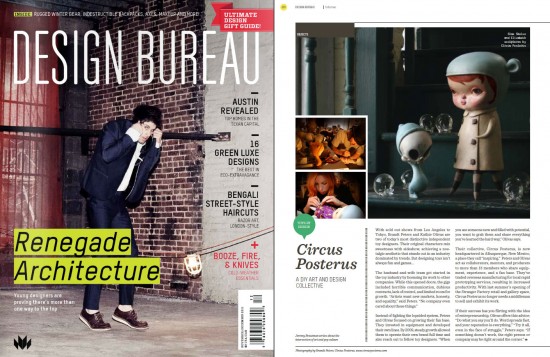
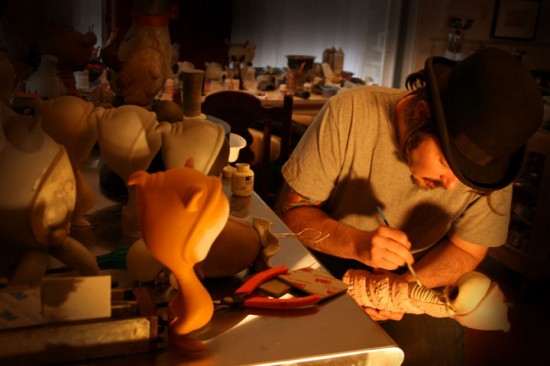
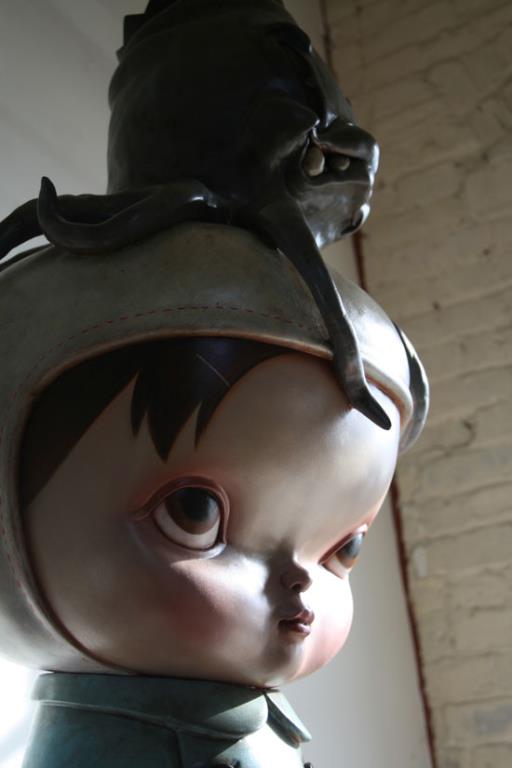
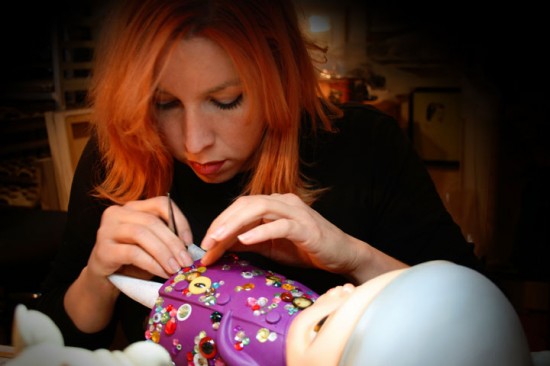
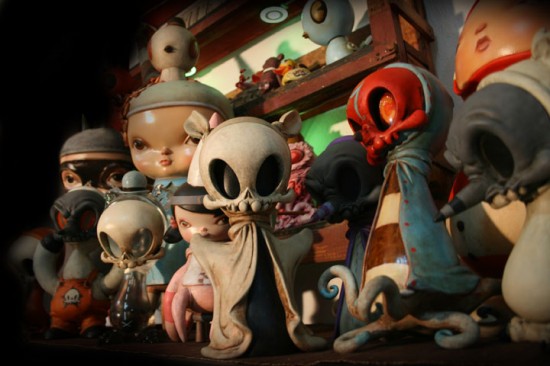
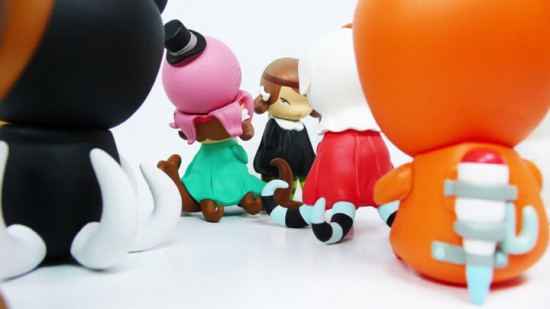
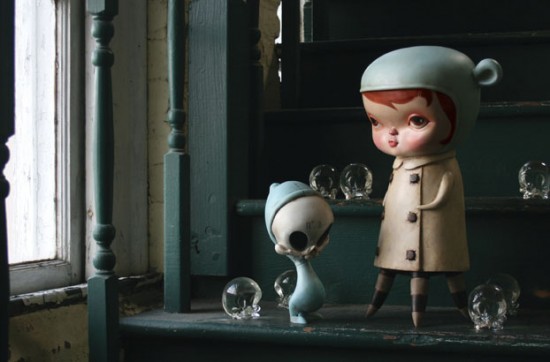
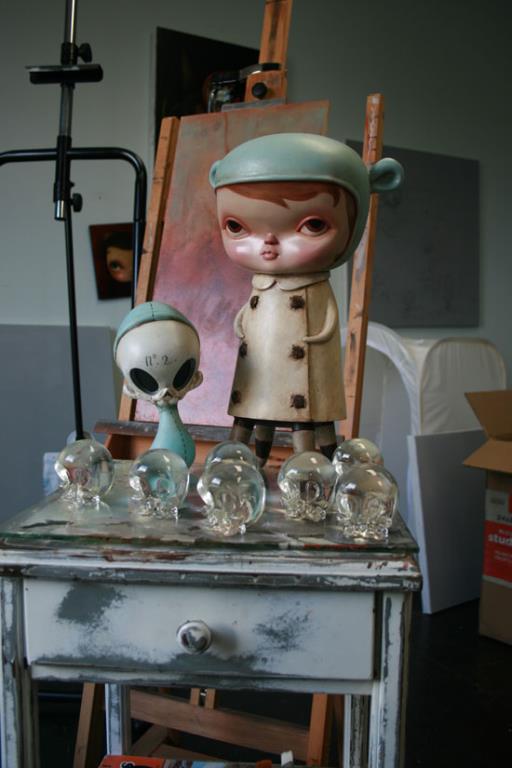
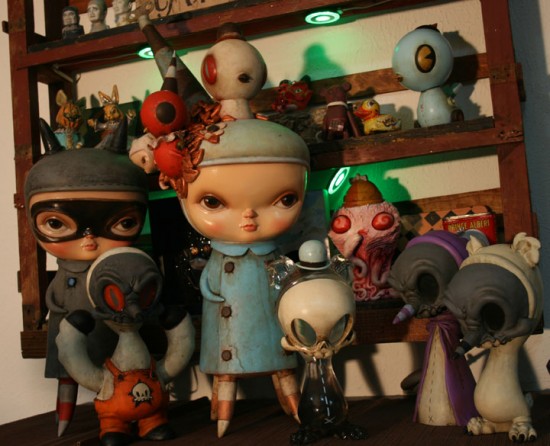
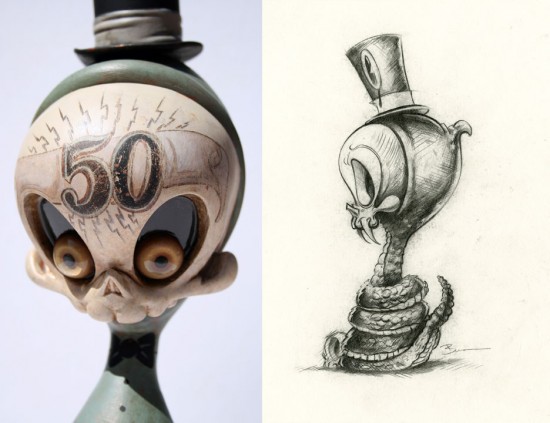
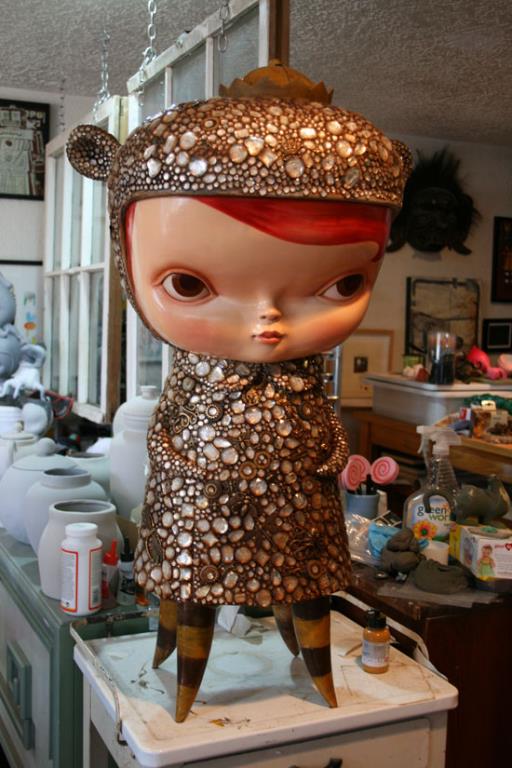
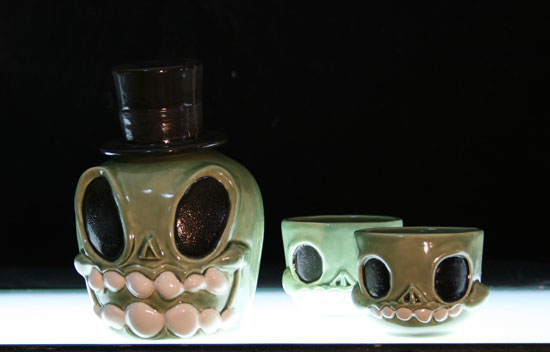
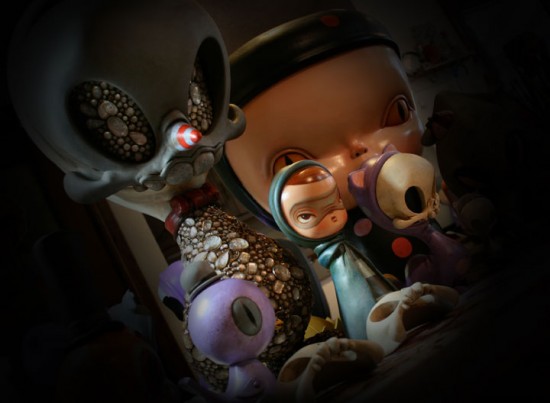
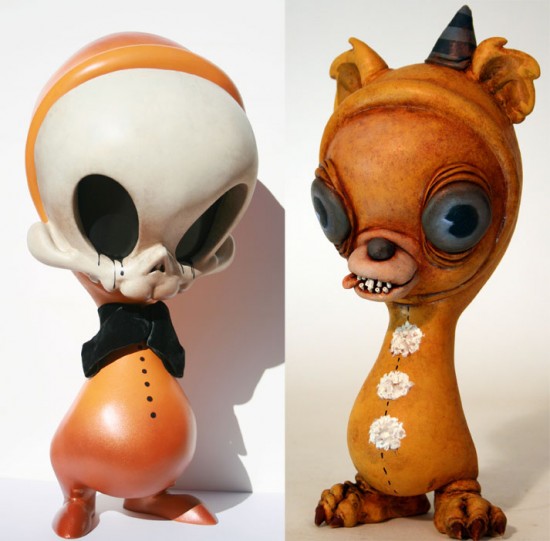
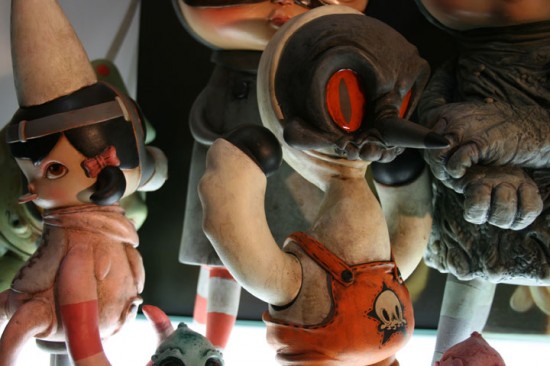
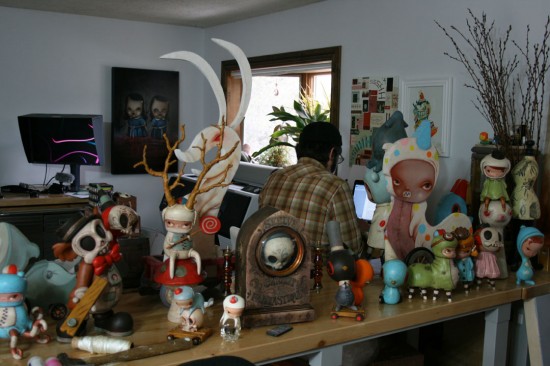
Super inspirational interview Jeremy! CP, KO and BP have always been hugely inspirational for me, and for someone who’s struggling to fit into ‘the real world’ finding work, CP definitely gives me some sort of hope that doing what you love with the people you love is achievable
Great interview!
I didn’t know much about CP, but now I am a fan
^Same here Sergey.
Really enjoyed hearing Kathie and Brandt’s thoughts. I knew very little about them beforehand.
Reading an interview like this and getting better insight into the moves behind the scenes makes me want to be more conscious of which toy artists and companies I choose to support…only 5%… yikes